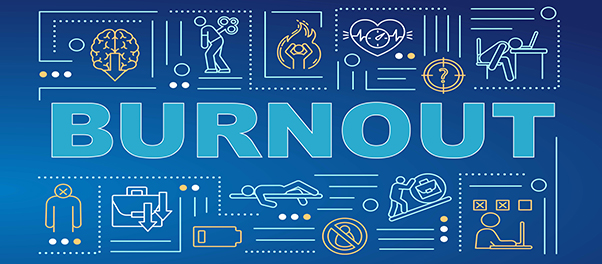1. THERAPIST BURNOUT
Burnout is a research term by Christina Maslach, Michael P. Leiter, and Susan Jackson to identify how workplace stress leads to illness. Burnout encompasses emotional exhaustion, depersonalization, and unaccomplished feelings. In the past few decades, the term burnout rose as the focus of research and conversation in healthcare settings. Therapist burnout references a type of stress which affects the work performance of mental health professionals and counselors in the field.
If you recognize the signs of burnout, then it’s time to take a break. Therapists who experience burnout find it difficult to empathize and listen to their patients. Therapist burnout feels like that cold that never ends, the crabbiness you didn’t expect to come out in your response, and the inability to be fully present in the moment. Learn about cultivating emotional balance in your daily life as a mental health professional with Dr. Paul Ekman, one of the most cited psychologists in the field, his daughter Dr. Eve Ekman, and Ryan Redman from the Flourish Foundation.
2. CAUSES OF BURNOUT
- Young Age & Limited Work Experience
- Ill-defined Boundaries & Emotional Labor
- Organizational Funding & Accessibility Issues
—
Jennifer Johal, MPH, CHES® and community education trainer from Crisis Support Services of Alameda County identifies spending too many hours at work, competitive culture, and difficulty setting limits as risk factors in healthcare burnout.
Young Age & Limited Work Experience
Researchers Carlton Craig and Ginny Sprang identify age and years of experience as two key factors in the role of burnout. In a study regarding trauma therapists, the most self-reported burnout occurs in younger professionals. Craig and Sprang reveal young age and “having no special trauma training, being an inpatient practitioner, and not using evidence-based practices significantly predicted burnout.” If you are new to providing therapy or counseling, allow yourself additional moments to recuperate. Younger professionals may feel a different pressure when trying to establish themselves in the field.
—
And, trauma therapists with more experience report higher feelings of compassion satisfaction.
—
Compassion satisfaction is the opposite of compassion fatigue, where the care provider derives satisfaction from their interactions with their patients. This is a difficult task for therapists struggling with emotional exhaustion. Compassion fatigue is a result of therapist burnout. Therapists suffer from burnout when their usual coping mechanisms do not alleviate their stress.
Emotional exhaustion tends to occur when working extremely emotionally attentive shifts, managing high-risk patients, and having difficulty processing complicated emotions. To learn more, consider Dr. Pirelli’s workshop on vicarious trauma, compassion fatigue, and burnout to understand the connection between the three in a mental health and forensic setting.
Ill-defined Boundaries & Emotional Labor
It’s also no secret mental health care workers are underpaid and understaffed. Many in the field continue to provide support because of their emotional connections to the work. Learn to be firm with the boundaries in place at your practice. Strong boundaries help avoid enmeshing your patient’s trauma as your own. This process is known as vicarious trauma. This article covers the various ways establishing boundaries with patients protects professionals from therapist burnout. Providing therapy is a skill that needs a clear division between work and personal life.
Ultimately, emotional labor is different from any other type of labor. There are days where you hear the unimaginable. To truly listen and hold space for others, therapists learn to actively manage their emotions and put their reactions on hold until an appropriate time to process arises. To perform at your highest capability, recognize the reality of what emotional labor ensues. There’s no sleeping off a tired mind or any way to shower away a sore heart. This work calls for consistent self-care.
Organizational Funding and Accessibility Issues
There is talk of a mental health crisis, yet no appropriate funding to address the situation. The National Council for Wellbeing describes the mental health services in the U.S. as insufficient for the 56% of Americans seeking help and reveals lack of access as the root cause. Because of organizational lack of funding, many government and nonprofit positions require therapists to accept more patients than they are comfortable overseeing for little compensation. Many of these organizations insist on lengthy note formats, a diagnosis, and a treatment plan after the first session, all of which are time-consuming tasks.
Accessibility issues include financial costs for patients, cultural stigma in specific communities, and limited options when it comes to providers. And, there are increasing amounts of therapists declining insurance payments due to billing and privacy complications. Therapists who accept insurance tend to spend several extra hours per session to obtain reimbursement for a single session. Additionally, some therapists are uncomfortable with the amount of notes they need to disclose to receive compensation.
3. HOW TO PREVENT BURNOUT
- Plan Time to Rest
- Identify Personal Triggers
- Create a Support System
Plan Time to Rest
Therapists are particularly adept at creating safety plans and identifying their coping mechanisms. Then again, burnout happens because therapists unfortunately can’t find the time to implement those plans. Make sure to plan moments of rest throughout your calendar intentionally. Make a ritual right for you and your schedule. Acknowledge the difficulty of therapeutic work. And, be kind to yourself the way you are towards clients.
Identify Personal Triggers
Identify topics that are personally sensitive to you. Become comfortable with the idea that these topics at some point in your career will become the main focus of a conversation, potentially quite frequently. Know these moments happen. Take the extra time and space to adjust emotionally. Think deliberately before entering a field centering around a personally heavy matter.
Create a Support SystemBuild strong connections in and outside the workspace to increase moments of positive social interaction. A mental health professional also recognizes the need for their own therapist or counselor to address personal and work matters. And, learn to communicate your needs to your co-workers. Sometimes, a client is a better fit for a particular therapist. Or, you may need to refer clients during a hiatus or vacation period. Pass along local hotline numbers, too, in cases where a client needs extra support.
Additional ResourcesAs an in-depth resource, Palo Alto University offers a downloadable guide to burnout and compassion fatigue. These comprehensive resources cover suicide rates and distress symptoms of medical workers both before and during the COVID-19 pandemic, as well as extra opportunities to explore the compassion fatigue phenomenon, and how to integrate self-care with your personal therapy.
__
In addition to the downloadable guide, CONCEPT Professional Training offers a self-paced continuing education course by Dr. Lynn C. Waelde on inner resources for stress which include mindfulness and meditation techniques for self-care.
__
Or if you prefer to hear from personal experience, look into Jessica Smith’s Thoughtful Counselor Podcast to hear a counselor’s inspiring story with self-care, burnout, and the way forward.
__
Therapist burnout sounds inevitable with the nature of the job, so prepare to rest and recover continuously. Understanding the causes of burnout helps us know which behaviors lead to work-related stress. Look for the patterns you display at work and find out where there’s room to add burnout prevention strategies.























